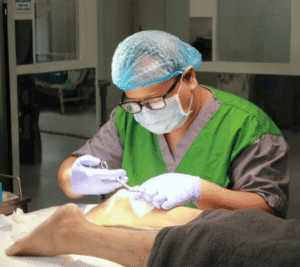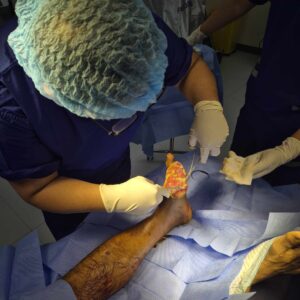Musculoskeletal issues like joint pain, back problems, or sports injuries can dramatically impact your daily life. When these issues arise, an orthopedic doctor becomes an essential ally in restoring movement, reducing pain, and improving your overall quality of life. Understanding what an orthopedic doctor does, the conditions they treat, and how they can help you is the first step toward regaining mobility and comfort.
What is an Orthopedic Doctor?
An orthopedic doctor specializes in diagnosing, treating, and preventing conditions affecting the bones, joints, ligaments, muscles, tendons, and nerves. They are experts in the musculoskeletal system and can manage anything from minor sprains to complex fractures or chronic joint disorders.
Orthopedic doctors are not only for athletes or elderly patients; they treat individuals of all ages. Some focus on non-surgical care, while orthopedic surgeons are trained to perform procedures such as joint replacements or arthroscopic surgery when necessary.
Common Conditions Treated by an Orthopedic Doctor
An orthopedic doctor can address a wide range of conditions, including:
- Arthritis and Osteoarthritis – Managing inflammation and pain in joints.
- Fractures and Dislocations – Aligning bones and aiding recovery after trauma.
- Sports Injuries – Treating ACL tears, rotator cuff injuries, or meniscus damage.
- Spine Disorders – Addressing herniated discs, scoliosis, and chronic back pain.
- Carpal Tunnel Syndrome and Tendonitis – Alleviating nerve compression and repetitive strain injuries.
These conditions can vary in severity, but early intervention from an orthopedic doctor often leads to faster recovery and prevents complications.
Signs You Need to See an Orthopedic Doctor
Certain symptoms should prompt you to schedule a consultation with an orthopedic doctor:
- Persistent pain in joints, bones, or muscles that lasts more than a few weeks.
- Limited mobility or stiffness that interferes with daily activities.
- Numbness, tingling, or weakness in arms or legs.
- Visible swelling or deformities after an injury.
- Failure to heal from a previous injury despite rest and home care.
Ignoring these signs could worsen your condition and make treatment more challenging.
What to Expect During a Visit to an Orthopedic Doctor
When you visit an orthopedic doctor, the process typically begins with a detailed medical history and physical examination. They may use diagnostic tools such as:
- X-rays for visualizing bone alignment.
- MRI scans for detailed images of soft tissues.
- CT scans to assess complex fractures.
- Ultrasound for evaluating tendons and ligaments.
Once they identify the problem, your orthopedic doctor will create a personalized treatment plan tailored to your needs and lifestyle.
Treatment Options Offered by Orthopedic Doctors
Orthopedic doctors use a variety of treatment methods depending on the severity and nature of your condition.
Non-Surgical Options
- Physical Therapy – Exercises to strengthen muscles and restore flexibility.
- Medications – Pain relievers and anti-inflammatories.
- Injections – Cortisone or hyaluronic acid for joint pain relief.
- Assistive Devices – Braces, orthotics, or walking aids to support healing.
Surgical Options
When non-invasive treatments are not enough, your orthopedic doctor may recommend surgery:
- Arthroscopy – Minimally invasive surgery to repair joint issues.
- Joint Replacement – Replacing damaged joints with artificial implants.
- Spinal Surgery – Procedures to relieve nerve pressure or stabilize the spine.
Modern orthopedic surgeries are often less invasive, with quicker recovery times.
How to Choose the Right Orthopedic Doctor
Selecting the right orthopedic doctor is crucial for successful treatment. Consider the following:
- Credentials and Experience – Board certification and years of practice in specific orthopedic subspecialties (e.g., sports medicine, hand surgery).
- Specialization – Choose a doctor experienced in treating your specific condition.
- Patient Reviews and Referrals – Insights from others can guide your decision.
- Hospital Affiliations – Access to advanced medical technologies and facilities.
- Communication Style – A good orthopedic doctor listens and explains treatment options clearly.
Preventive Tips from Orthopedic Doctors
Orthopedic doctors emphasize prevention as much as treatment. Here are some tips they recommend:
- Maintain a healthy weight to reduce stress on joints.
- Engage in regular exercise focusing on strength, flexibility, and balance.
- Practice good posture while sitting, standing, or lifting.
- Use proper techniques during sports or physical activities to avoid injuries.
- Pay attention to early warning signs and seek medical advice promptly.
Orthopedic Doctors and Long-Term Care
For chronic conditions like arthritis or degenerative disc disease, an orthopedic doctor provides ongoing care. This may involve regular monitoring, physical therapy sessions, and lifestyle guidance to slow disease progression and maintain mobility.
Post-surgical patients also benefit from long-term follow-up with an orthopedic doctor to ensure proper healing and avoid future complications.
Takeaway
An orthopedic doctor plays a vital role in diagnosing, treating, and preventing musculoskeletal conditions that can limit your ability to live an active and pain-free life. Whether you’re dealing with a sports injury, chronic joint pain, or a complex fracture, seeking expert care early ensures the best outcomes.
Your journey toward better bone and joint health starts with finding a qualified orthopedic doctor who understands your unique needs and provides compassionate, expert care.






